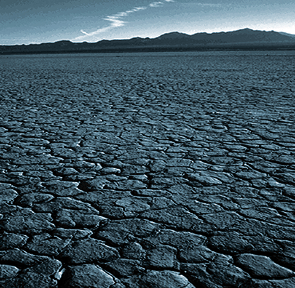
Mark McCaffrey - BASIN Communications Coordinator
Science Communications Specialist
NOAA Paleoclimatology Program/National Climate Data Center
 |
|
Mark McCaffrey - BASIN Communications Coordinator Science Communications Specialist NOAA Paleoclimatology Program/National Climate Data Center |

Droughts, periods of below-normal precipitation, are a naturally occurring
phenomenon in most areas of the world. In areas such as the high plains of
eastern Colorado that are arid to begin with, reduced snowfall in the
mountains can have a ripple effect throughout the region.
Drought can be expressed as
a function of precipitation minus evaporation minus demand over time,
or Drought = P -E -D. Droughts don't necessarily have to occur in the
summer, but the summer months is when the impact is the most obvious,
with evaporation and demand-- for irrigation of crops by farmers and by
cities and homeowners for their lawns and landscaping-- being higher than
other times of year. In the Boulder Creek Watershed, precipitation, evaporation
and demand can vary a great deal between the mountains, where most moisture
comes in the form of snow during March and April) and the plains, where
most people in the region live. (See the learning activity on Water Budget for more.)
Meteorological droughts relate to a "below normal" amount of
precipitation, while a hydrological drought refers to the entire local
water system including streamflow. Droughts vary in duration. An agricultural
drought may only last a few months but they can devastate crops which
require a certain amount of precipitation at a critical time in their
growth cycle. More severe hydrologic droughts can last for years and even
decades or longer, as in the case of the "mega-drought" in American
Southwest during the 16th Century. When it comes to answering the question
"how long will this drought last?", even experts at climate
change can't accurately predict whether a drought is going to be short-lived
or last for a decade or more.
Because records from stream gauges, rain gauges and thermometers are limited
to primarily the past 100-150 years, paleoclimate records such as tree
rings are important to gaining a long-term perspective on drought variability.
Below is a reconstruction from tree rings of the annual flow of Middle
Boulder Creek going back to 1702. Note that the 1800s had two periods
of sustained drought-- one in the 1840s that lasted about a decade, and
another in the 1880s. Both were significantly more severe than the droughts
of the 1930s and 1950s, calling into question what a "normal"
range of variability is for this region.
